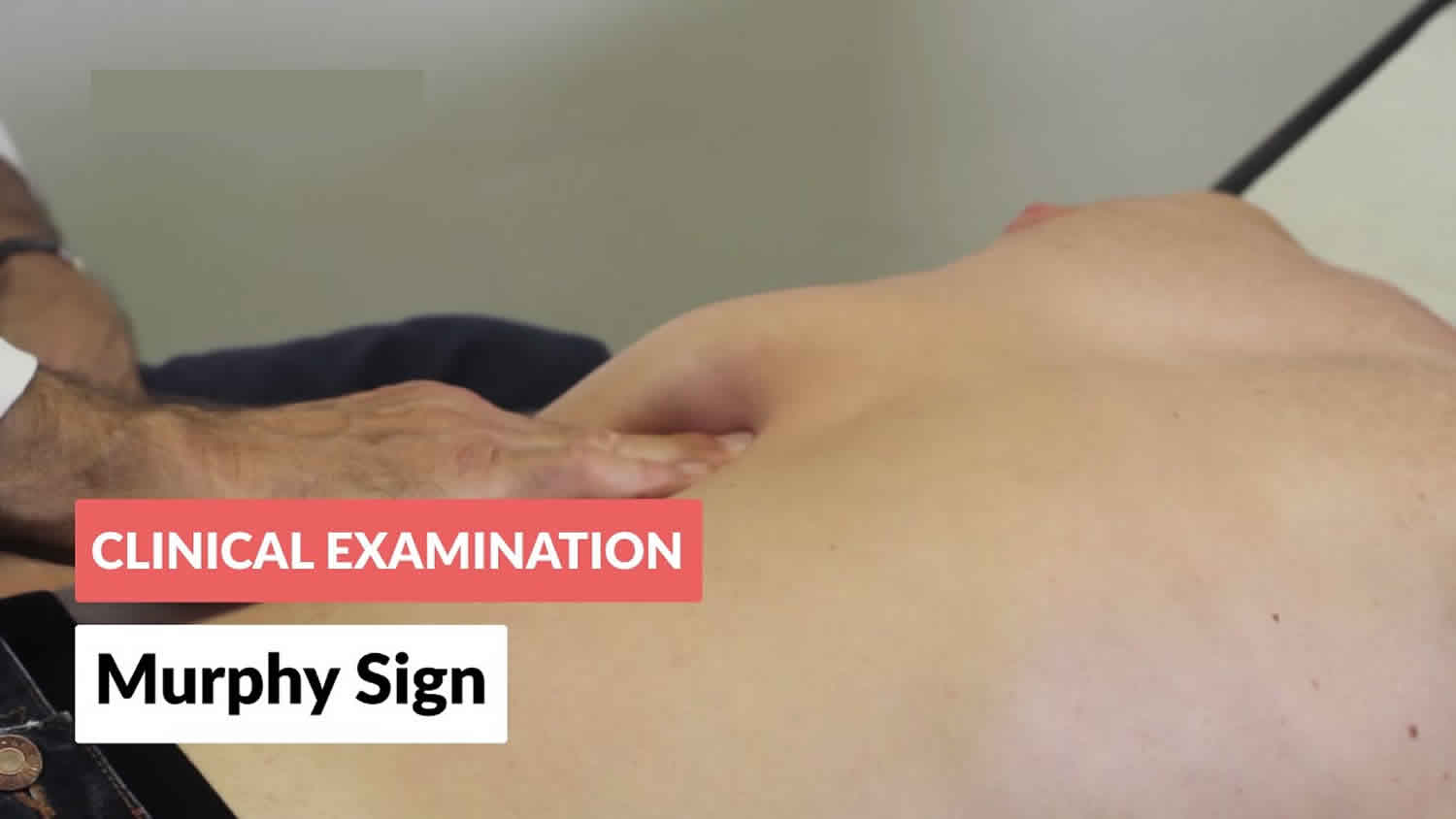Murphy’s sign
Murphy’s sign refers to a physical examination maneuver that is part of the abdominal examination and a finding elicited in ultrasonography. Murphy’s sign is useful for differentiating right upper quadrant abdominal pain. Murphy’s sign is a sign of local inflammation around the gallbladder along with right upper quadrant pain, tenderness and/or a mass 1. Typically, it is positive in cholecystitis, but negative in choledocholithiasis and ascending cholangitis.
Murphy’s sign has a high sensitivity and positive predictive value. However, specificity is of moderate value 2. Correlation among clinical, laboratory, and hepatobiliary scanning findings in patients with suspected acute cholecystitis. however, should be interpreted with more caution in the elderly 3.
Classically, Murphy’s sign is performed by asking the patient to breathe out and then gently placing the hand below the costal margin on the right side at the mid-clavicular line (the approximate location of the gallbladder). The patient is then instructed to inspire (breathe in). Normally, during inspiration, the abdominal contents are pushed downward as the diaphragm moves down (and lungs expand). If the patient stops breathing in (as the gallbladder is tender and, in moving downward, comes in contact with the examiner’s fingers) the test is considered positive Murphy sign 4. A positive test also requires no pain on performing the maneuver on the patient’s left hand side.
Murphy’s sign ultrasound
Murphy’s sign ultrasound is defined as maximal abdominal tenderness from pressure of the ultrasound probe over the visualized gallbladder 1. It is a sign of local inflammation around the gallbladder along with right upper quadrant pain, tenderness and/or a mass 1.
Murphy’s sign is one of the most important sonographic signs of cholecystitis and when combined with the presence or absence of cholelithiasis it has a high positive and negative predictive value respectively 5.
Sonographic Murphy sign is the radiological correlate of the clinical Murphy sign, which is elicited by deep palpation of the right hypochondrium followed by the examiner asking the patient to inspire. If the patient’s breath abruptly stops, then it is a positive Murphy sign 4.
References- A Systematic Review and Meta-Analysis of Diagnostic Performance of Imaging in Acute Cholecystitis. Jordy J. S. Kiewiet, Marjolein M. N. Leeuwenburgh, Shandra Bipat, Patrick M. M. Bossuyt, Jaap Stoker, and Marja A. Boermeester. Radiology 2012 264:3, 708-720 https://doi.org/10.1148/radiol.12111561
- Singer AJ, McCracken G, Henry MC, Thode HC Jr, Cabahug CJ. Ann Emerg Med. 1996 Sep;28(3):267-72
- Adedeji OA, McAdam WA. Murphy’s sign, acute cholecystitis and elderly people. J R Coll Surg Edinb. 1996 Apr;41(2):88-9.
- Jackson PG, Evans SRT. 2017. Sabiston Textbook of Surgery. 20th ed. New York (NY). Chapter 54, The biliary system, p.1482-1519.
- Noble VE, Liteplo AS, Nelson BP et-al. The impact of analgesia on the diagnostic accuracy of the sonographic Murphy’s sign. Eur J Emerg Med. 2010;17 (2): 80-3. doi:10.1097/MEJ.0b013e32832e9627





